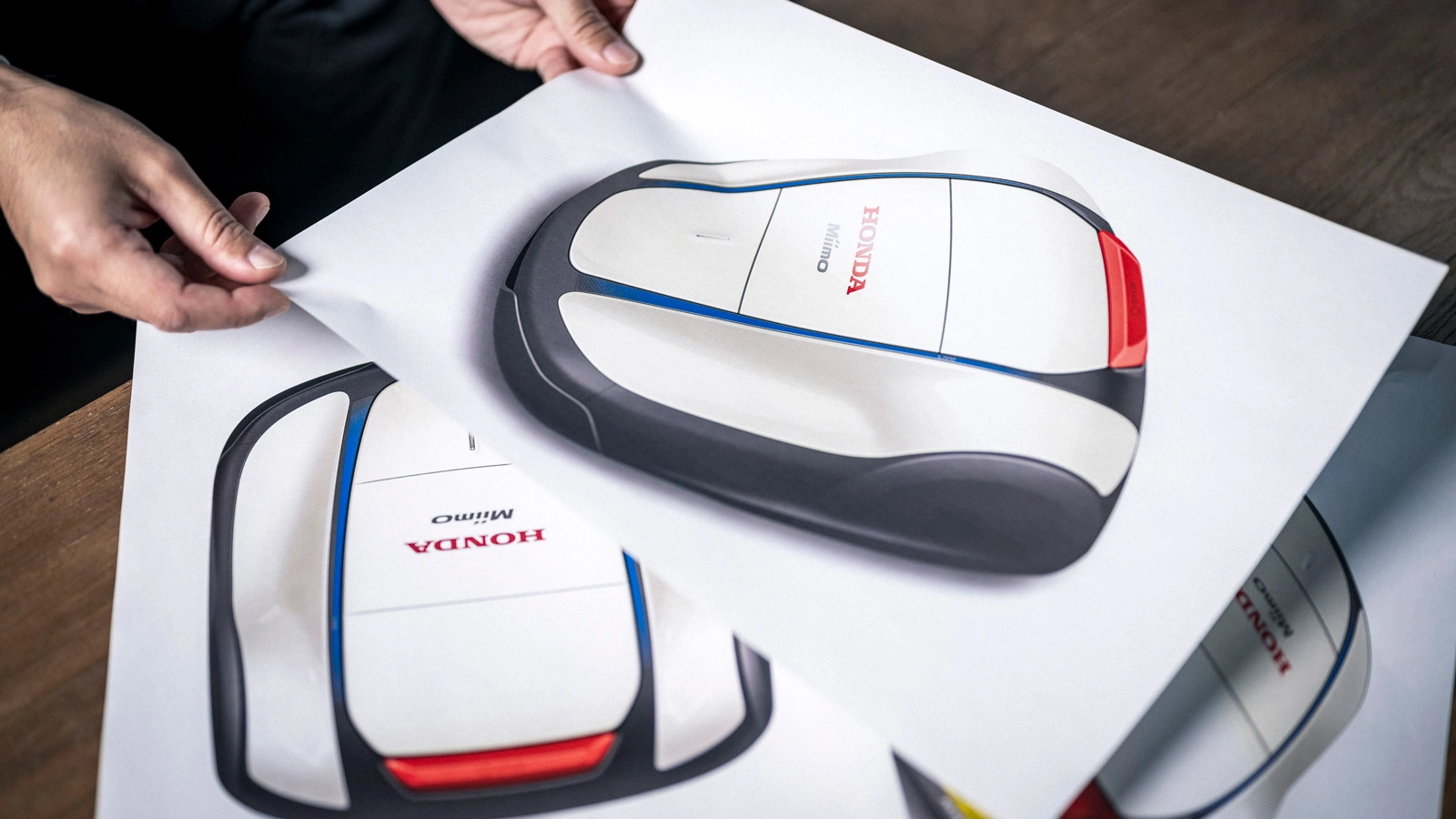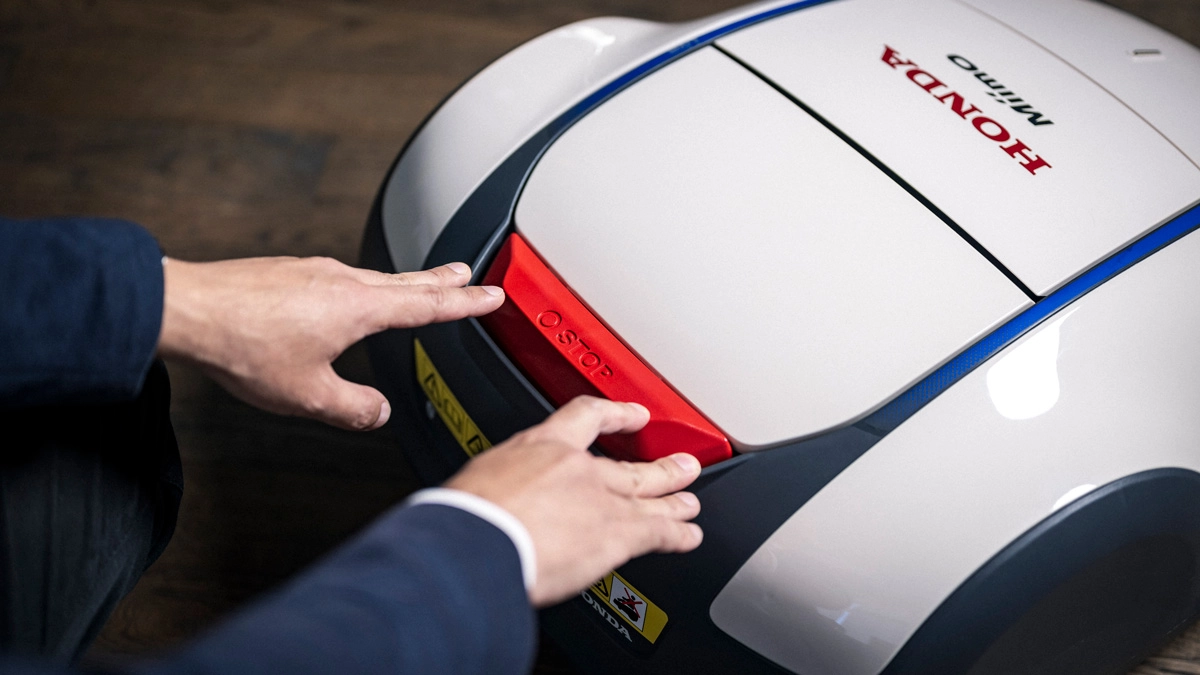
Presence as a Member of the Family Felt Since the First-Generation Model
What are your honest thoughts about winning an award at the Red Dot Design Award?
Okubo
As a result of being blessed with great members in development who can give shape to
products, we were able to receive awards at the Red Dot Design Award for five
consecutive years as Honda. This is a great honor.
Besides its ease of use, the judges also recognized its consideration of ergonomics. Miimo is not just a machine. We designed it with the image of a partner who lives together with the customer. I am very happy that this point was highly rated.


Ensuring Safety While Sporting a Warm Design
How did you incorporate this concept into the product?
Okubo
First, we formed a mental image about the kind of European family that would use this
product. We heard that, in a generic family, grass grows in a large garden where people
often spend their time, playing with children or reading books. For example, on days
off, the parents could be barbequing in the garden while children play with their dog at
one side. To blend a robotic lawn mower into this scenery, we felt it would be good to
have a design that feels warm.
To express this warmth, we chose a warm white for the lawn mower’s body. This is a new color made for Miimo, and the white color looks just nice when placed on a lawn. We also wanted to make dirt and rain stains less noticeable. While we call it a partner, it is still a work machine, and we designed it such that stains would not be noticeable even if it is not washed so that it can be used for long periods of time.


In the aspect of design, what were the things inherited from the first-generation Miimo?
Okubo
We wanted to keep the familiarity and warmth that the first-generation Miimo had. It had
the reliability of a work machine yet suppressed its coldness as a machine. Our desire
was for the second-generation Miimo to inherit these attributes but still look different
at a glance. We revised the design many times to strike a balance.
Comparing the two models, the size and shape did not change significantly between the first and second generations. However, it was very different in terms of color, including the allocation of colors. In the first-generation model, white and black were distinctively separated, with a design that, when viewed from above, had a white body at the center on which laid a large black triangle. The second-generation model, in contrast, only has a white body that comes with lines. Boldly changing the color balance, we pursued a color allocation that better blends in with the atmosphere of a garden compared to the first-generation model.
There are also safety elements inherited from the first-generation model. For example, the rear wheels are often exposed in competitors’ products, but Miimo covers them completely. Although there are disadvantages in terms of design, this was the result of prioritizing safety. In the design of Miimo, safety is also the most important aspect.
In terms of functionality, one change is the easy-to-understand placement of the red “STOP” button. The stop button was placed in the center of the first-generation model’s body, but for the second-generation model, we placed it in the rear. This button is used when you want to stop the turning of the blades and wheels, and changing its location makes it easier to access the operation panel.
p We also changed the material of the front parts from plastic to rubber. This makes it more difficult to damage anything that the lawn mower bumps into, and also mitigates damage to the lawn mower itself, making it easier to keep it clean.The Origin Is a Honda Design That Tells a Story
What are the areas that give a sense of Honda’s design identity?
Okubo
I think Honda’s identity lies in human-centric design. Making the garden gorgeous and
enriching the lives of family members and friends—the second-generation Miimo was
developed based on such an image. To avoid disrupting people’s lives, we kept in mind to
achieve a design that does not have an overly assertive presence when placed on the
lawn, a design that stays close to people’s lives and blends in even though it has high
performance. We can say this is Honda’s uniqueness.


Profiles

Kiyoharu Okubo
Motorcycle and Power Products
Products Designer